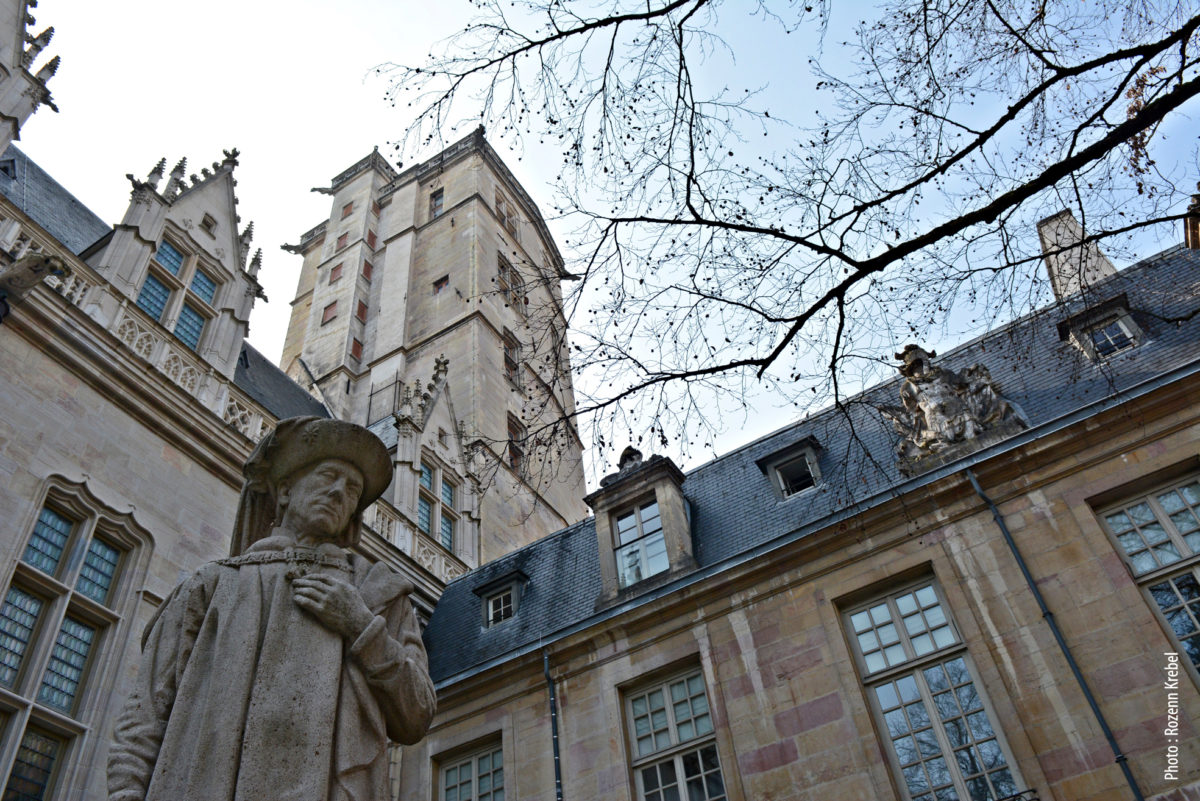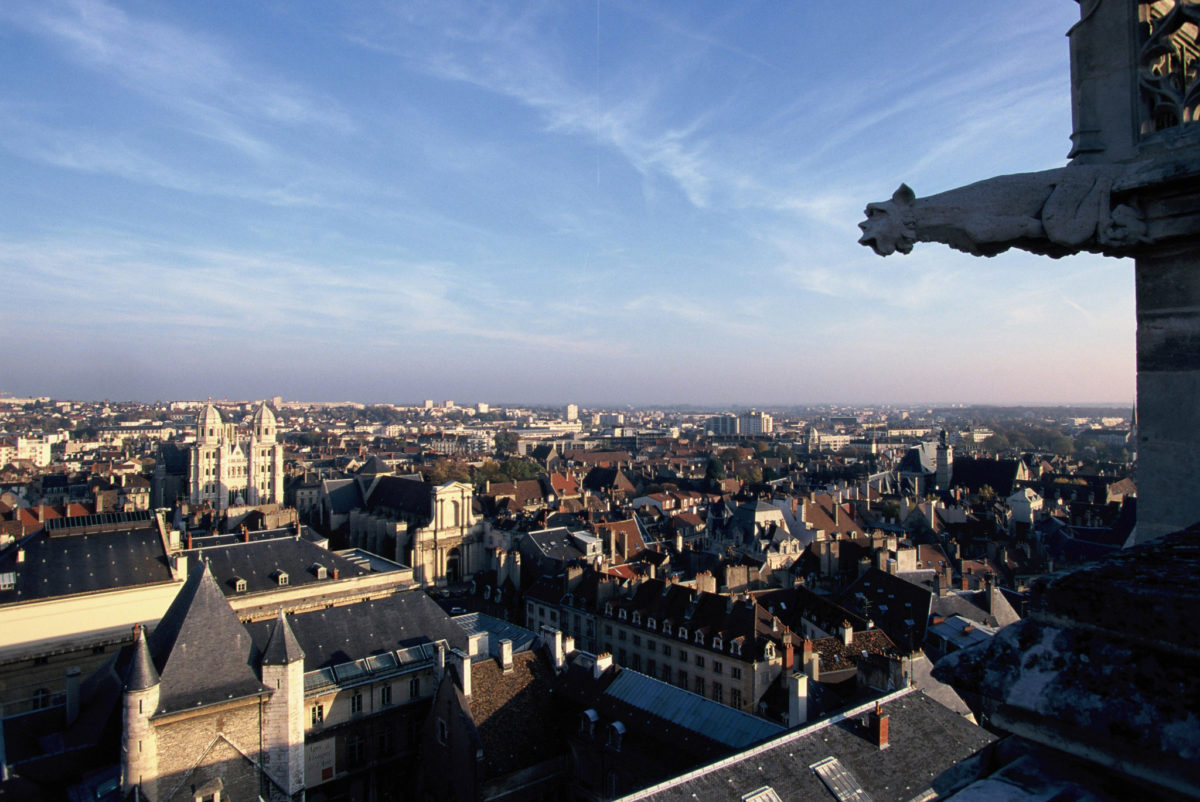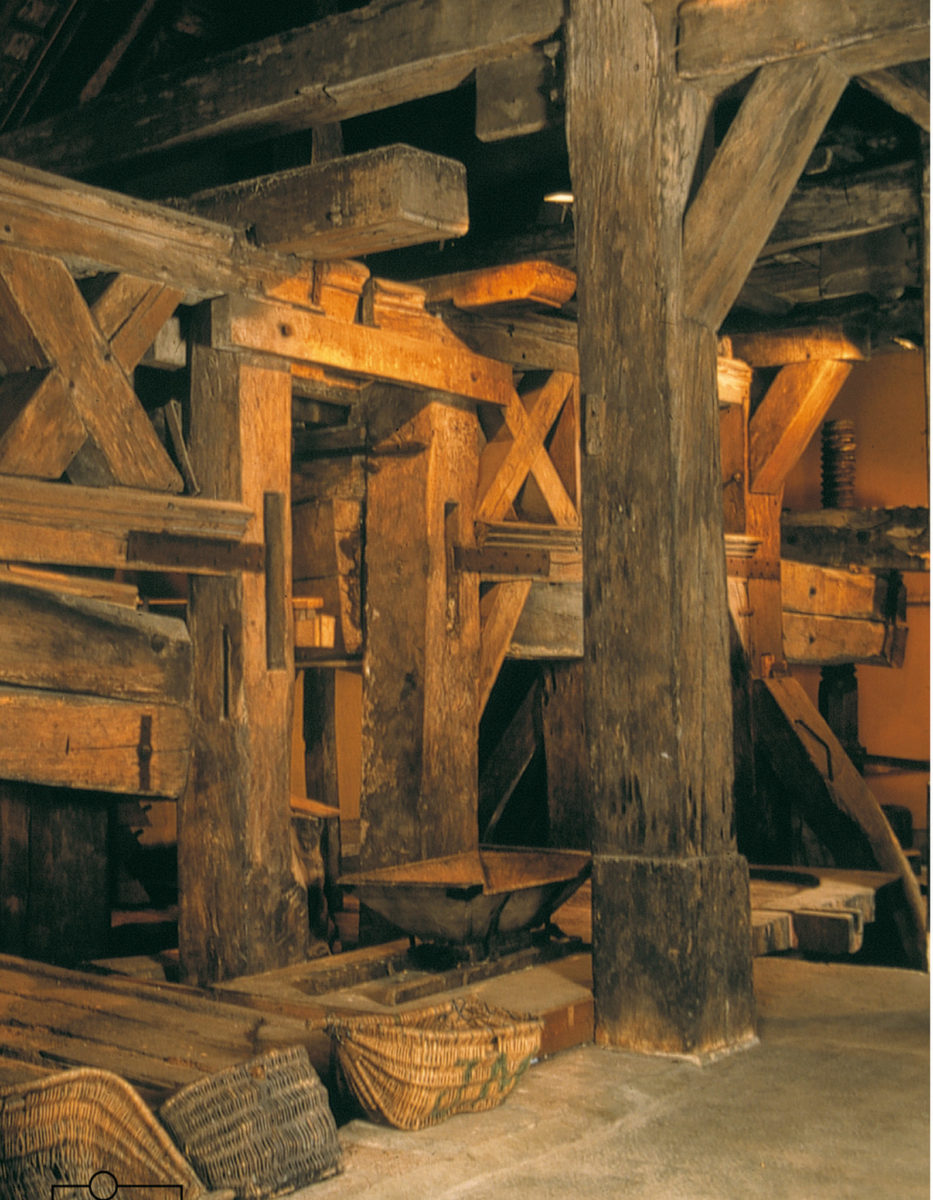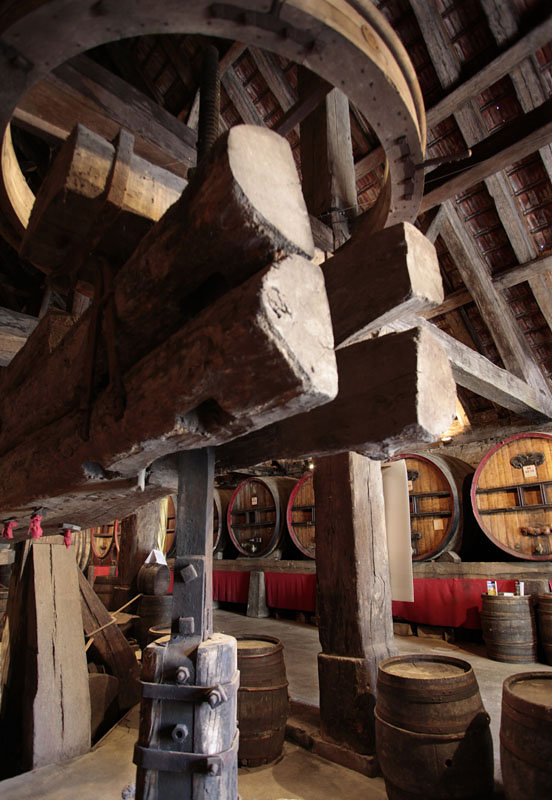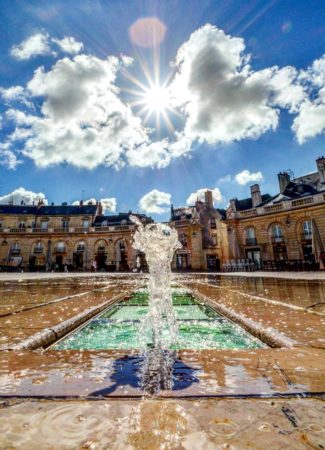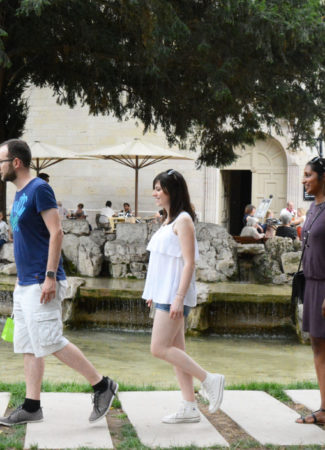The capital of the all-powerful Dukes of Burgundy enjoys an exceptional legacy in terms of built heritage. The city of Dijon is indeed an open-air museum that succeeds in highlighting a remarkably well-preserved historical centre. Don’t miss the key features from the flamboyant period of the Grand Duchy of Burgundy!
The old town of Dijon and the Owl trail
Dijon centre is criss-crossed with picturesque streets worth taking the time to explore. Stop at the tourist office on Rue des Forges (just behind the ducal palace) for your copy of the Owl trail booklet.
This one-hour walking itinerary explores the old Dijon in twenty two stages, starting at Place Darcy. Just follow the signs depicting the lucky charm of the people of Dijon, a golden owl. This will take you to the famous stone statuette of the famous owl who makes wishes come true!
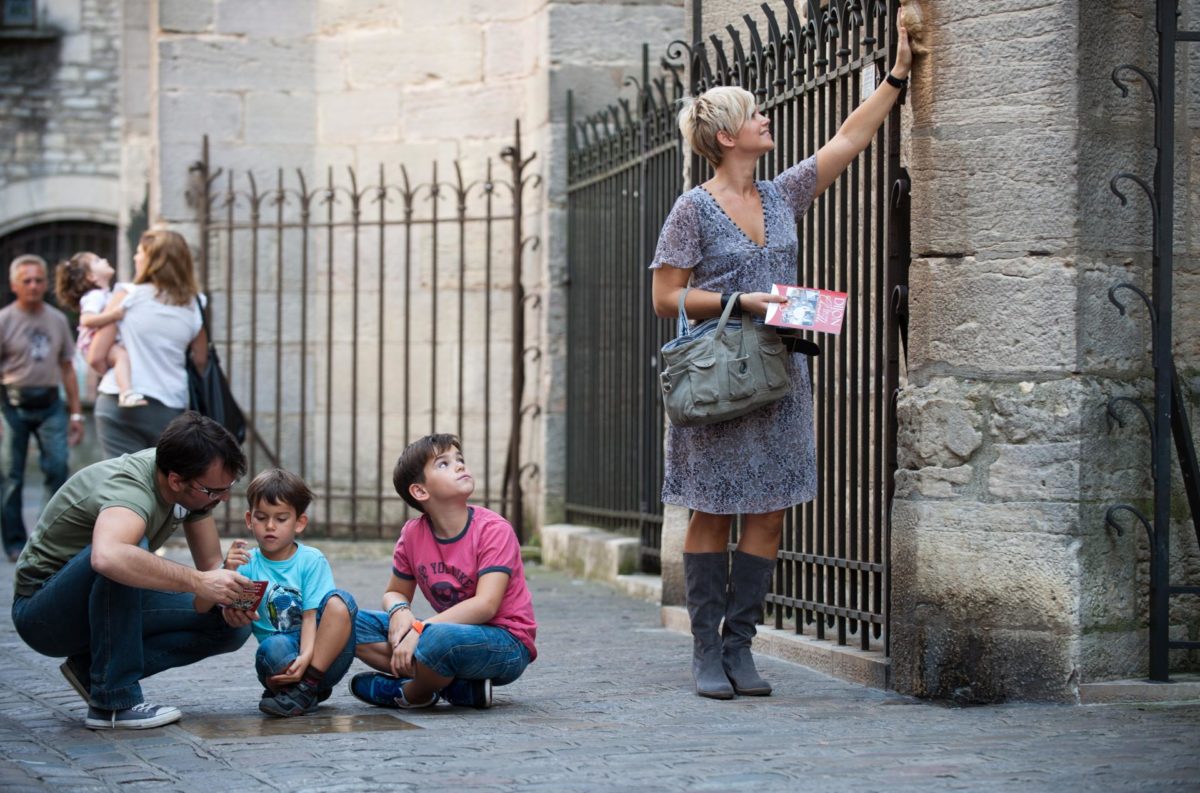
The Well of Moses
Of the 14th-century Champmol charterhouse founded by Duke Philip the Hardy, who intended to place his tomb there, only the famous Well of Moses still remains. This hexagonal calvary base, which once stood at the centre of a vast cloister, escaped the wrath of the French Revolution. Now towering seven metres above a spring, it is both a symbol and a veritable work of art!
Claus Sluter’s sculpture is indeed a work of marvellous precision and realism. It comprises six statues of Old Testament prophets, sculpted in the round. The Flemish master also created the monumental cenotaph to Philip the Hardy which is kept at the Fine Arts Museum.
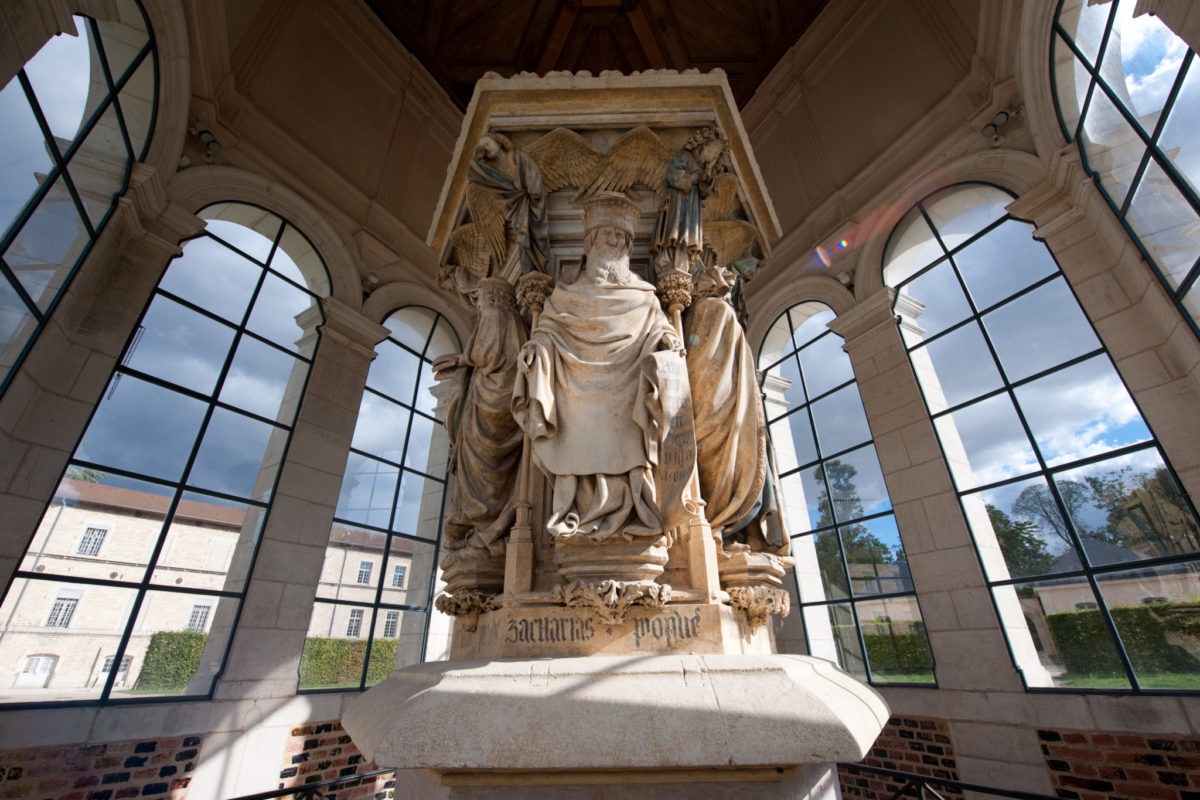
Philip the Good Tower
The Palace of the Dukes is still home to the Medieval Tower of Philip the Good. This 46-metre watch tower was built by architect Jean Poncelet between 1450 and 1460. It has six floors and a terrace which offers a superb panoramic view over the city of Dijon.
A tourist office guide will accompany you to the top of the tower, which can be rented privately for a cocktail party. Alternatively, you can join one of the “tower aperitif” tours which are organised every Friday and Saturday evening during the summer season.
The Burgundy Dukes’ wine presses
At the gates of Dijon, these two impressive wine presses pay tribute to the winegrowing tradition of Chenôve where the first mention of a ducal estate dates back to the 13th century. The Burgundy Dukes’ wine presses were created during the reign of John the Fearless and are still the region’s biggest and oldest presses, together with those of Clos Vougeot.
Until the 16th century, the presses belonged to the Kings of France. They were used continuously for six centuries, right up until 1926. The mechanism of moving stone counterweights (weighing four tonnes and eight tonnes respectively) is unique in Burgundy.





